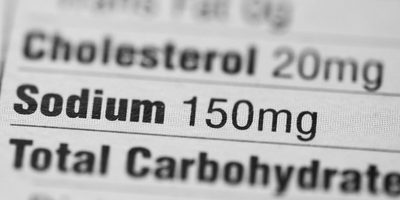
Rethinking the Healthy Food Partnership
In the last of a three-part series on the Australian Government’s Healthy Food Partnership Reformulation Program, Daisy Coyle and Emalie Rosewarne move beyond reformulation targets to explore what is needed for Australia’s reformulation program to be successful.
“A policy which is embraced by a Minister, approved by Cabinet, announced publicly, but inadequately delivered, is worse than no policy at all.”- Dr Peter Shergold AC, Secretary of the Department of the Prime Minister and Cabinet 2003-2008.
A healthier packaged food supply and improved Australian diets are the ultimate goals of the Healthy Food Partnership. A successful program would result in improvements to Australians’ diets and health through measurable reductions in sodium, saturated fat and sugar levels in packaged foods.
It has taken five years of planning and development for new reformulation targets for sodium, saturated fat and sugar to be released. To ensure this work is worthwhile, there needs to be a program to engage companies to act and hold industry to account.
In previous blogs, we explored how the reformulation program could be better aligned with international best-practice and how the reformulation targets need to be improved to have a meaningful impact. Here, we outline the steps the Government needs to take to ensure the program is successfully implemented so it can achieve its potential in improving the food supply.
As a voluntary system, the success of the reformulation program relies on the voluntary participation of the food industry. There are a few reasons food companies would choose to get involved, including wanting to demonstrate corporate social responsibility, keep up with consumer demand for healthier foods and stay competitive in the market.
But relying on the goodwill of companies, which are primarily motivated by profit, is not enough to ensure these long-awaited targets are successfully implemented. While some companies have a desire to improve the healthiness of their foods, it is likely that most will need strong external incentives to voluntarily reformulate their foods in line with the targets.
One way to do this is to publicly benchmark companies against the targets and against their competitors. This can facilitate an environment where companies strive to have healthier foods to gain a competitive edge. Our research has shown that sharing sodium monitoring data through media releases, including naming, shaming and praising companies, has been successful and can be used as a tool to engage food manufacturers in Australia and stimulate wider discussions about reformulation.
In the United Kingdom, we have seen the naming and shaming approach contribute to a reduction in salt levels in the food supply of up to 57% in some product categories. This strategy could be similarly used by the Australian Government to encourage manufacturers to participate in the reformulation program.
In addition, sharing positive case studies of manufacturers working towards producing healthier foods is another strategy to engage manufacturers in the reformulation program and create an environment where companies can learn from one another.
The Government has a crucial role to play in ensuring the success of the targets through the development of a comprehensive monitoring and evaluation action plan. This plan should include public reporting of progress, including individual company compliance, through annual audits of the food supply. These audits should be undertaken independent of government and industry to ensure reporting is unbiased and reflects compliance rates across the entire food supply.
Public reporting of food company compliance with the targets and the threat of regulation if food companies fail to act can be important levers to encourage participation in voluntary initiatives. As such, the Government should set a clear expectation that mandatory targets and fines for non-compliance may be introduced if voluntary efforts fail.
Findings from annual audits should also be used to gauge the overall performance of the Healthy Food Partnership and identify how the targets can be strengthened for greater health impact. The UK Government has been doing this since the release of their first sodium reformulation targets in 2006. Over the past decade, this has allowed them to set progressively lower sodium targets and add food categories to ensure they are making progress toward achieving their urgent public health goals. This is the model we should be following in Australia.
As Professor Shergold reminds us, inadequately delivered policy is worse than no policy at all. Under a voluntary system it is unrealistic to expect food companies to jump on board with reformulation targets without incentivising them to do so. It is the Government’s responsibility to create these incentives, otherwise little will be achieved.
Daisy Coyle is an Accredited Practising Dietitian (APD) within The George Institute for Global Health’s Food Policy Division. In 2018, Daisy commenced a PhD at UNSW on evaluating the effectiveness of reformulation initiatives to achieve healthier Australian diets. Daisy holds a Bachelor of Nutrition and Dietetics from the University of Newcastle and Bachelor of Science (Nutrition and Metabolism & Physiology) from the University of Sydney.
Emalie Rosewarne is an Accredited Practising Dietitian (APD) within The George Institute for Global Health’s Food Policy Division. In 2019, Emalie commenced a PhD at UNSW on evaluating nutrition programs to change the food environment in Australia. Emalie holds a Bachelor of Science (BSc) and a Master of Nutrition and Dietetics (MNutrDiet) from The University of Sydney.








